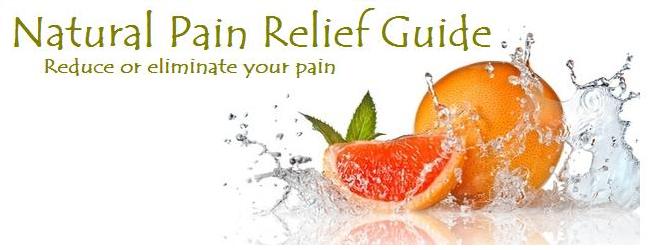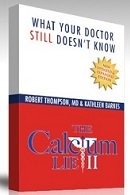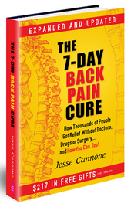Iron Deficiency Anemia
Symptoms and Causes
Anemia Symptoms and Causes - Description
Anemia is a condition where the blood does not have enough red blood cells or the blood does not have enough hemoglobin to meet the body's oxygen needs. A major factor in hemoglobin levels is the amount of iron available for its production. Normally, iron is the most abundant mineral found in blood. Body content is usually from 3.5 to 4.5 g of iron, 2/3 of which is present in the blood with the remainder stored in the liver, spleen and bone marrow.
The most important function of iron is its role in hemoglobin and oxygenation of red blood cells but it is also important for growth in children, for maintaining a healthy immune system and for the production of energy.
Note: Pernicious anemia (related to poor Vitamin B12 absorption) and sickle-cell anemia will be covered on other web pages.
Anemia Symptoms and Causes - Who's at Risk?
The highest risk groups are infants before two years of age, teenage girls, pregnant women and the elderly. Iron deficiency may be due to any combination of:
- increased iron requirement
- decreased dietary intake
- decreased absorption or utilization
- chronic kidney disease
- or blood loss which could be from
- wounds
- menstrual bleeding
- gastrointestinal ulcers
- cancer of the colon
- uterine cancer
- hemorrhoids
A young child with a diet high in milk and cereals may also become low in iron. A junk food diet increases the risk of iron deficiency. Blood loss is a common cause of iron deficiency in women of child-bearing age due to menstrual loss. Strenuous exercise and perspiring heavily can deplete iron from the body. A decreased ability to absorb iron puts elderly people at greater risk.
Iron deficiency can also be higher in cases of cancer, candidiasis, chronic herpes infections, rheumatoid arthritis or ulcers.
Ten to 25 percent of the population, mostly women, are deficient in iron. Vegetarians are no more likely to have an iron deficiency than non-vegetarians.
Alcohol intake slows red blood cell production.
Anemia Symptoms and Causes - How it Occurs
There are many possible reasons for anemia, the three most common being iron-deficiency anemia, vitamin B12 (pernicious) anemia and folic acid deficiency.
Iron deficiency can be from inadequate absorption which requires sufficient levels of hydrochloric acid in the stomach. Other factors required for absorption are copper, manganese, molybdenum, vitamins A, the B-complex, C and D and riboflavin.
Factors that can interfere with iron absorption are:
- antacids used for a long period
- calcium from dairy products
- calcium supplementation in excess
- coffee consumption (worse when consumed with milk)
- digestion that is poor
- phosphorus intake that is too high
- tea consumption (due to tannic acid levels)
- vitamin E, in excess
- zinc, in excess
Phytates and fibre: A vegetarian diet naturally high in fibre and phytates may decrease iron absorption. The phytates found in cereals, certain vegetables, roots and nuts may tend to decrease iron absorption, however, as the phytate and fibre content of a food increases, generally the iron content does also. Therefore, consuming such foods will have less of an effect on iron levels than might be expected. The higher iron intake compensates for poorer bioavailability. Availability of iron from many of these foods can be increased by soaking or sprouting as this removes much of the phytate content.
Refining whole grains removes much of the phytate but also much of the iron. Roasting nuts and seeds will also reduce phytates but does not have a desirable effect on the oils in such foods. Vitamin C greatly increases iron absorption so it can largely counteract the effect of phytate. Brown rice and tofu served with vitamin C-containing foods such as tomato sauce and broccoli can double or triple iron absorption.
Anemia Symptoms and Causes - Symptoms
There are quite a few possible signs and symptoms of iron deficiency including:
- appetite loss
- breathlessness
- dizziness
- fatigue
- hair loss and brittleness
- headaches
- infection fighting ability reduced (especially in children)
- insomnia
- listlessness
- pallor
- work capacity decreased
Anemia Symptoms and Causes - Vegetarian Sources of Iron
Only about one fifth of the dietary intake of iron in the Standard American Diet (or S.A.D. - not recommended by this site) comes from meat. Dairy products are deficient in iron unless they are enriched, but iron from dairy is poorly absorbed.
Iron is found in green leafy vegetables, whole grains, and enriched breads and cereals. Other foods that contain iron include:
- almonds
- avocados
- beets
- blackstrap molasses
- dates
- kelp
- kidney beans
- lentils
- lima beans
- millet
- parsley
- peaches
- pears
- prunes
- pumpkins
- raisins
- rice
- sesame seeds
- soy beans
- wheat bran
Cooking in a cast iron pot can also produce some iron in the diet.
To get the most out of your iron foods, consume concentrated sources of calcium or zinc (such as supplements) at a different time from high-iron foods.
Iron Supplementation
The recommended daily intakes (RDI) of iron for adult men and women are 10 mg and 15 mg, respectively. If you are not iron deficient then do not supplement as there are negative effects from excessive iron intake. These include:
- a decreased ability to fight infections
- an increased risk of cardiovascular heart disease
- an increased cancer risk
If you are shown to be iron deficient, and only then, supplement with ferrous iron or an iron chelate. These forms are absorbed 1.5 to 15 times better than ferric iron.
The best product I am aware of to supplement iron levels and really make a difference is AIM's RediBeets - a dried beet juice powder. This works so well because beets are very high in iron and because it is a whole food product where the iron compound is not isolated from the rest of the beet. Here is
more information about RediBeets
and and how to purchase it.
If you are at all concerned about your iron status, have a blood test that will determine both your hemoglobin (blood iron) and ferritin (iron stores).
|
Keep up to date with
valuable insights into
pain management via
a healthy lifestyle.
Receive the monthly
Natural Pain Relief
Guide Newsletter.
News articles, health
tips, specials, freebies.
Enter your email and name
in the form to the right.
|
|
|








New! Comments
Have your say about what you just read! Leave me a comment in the box below.